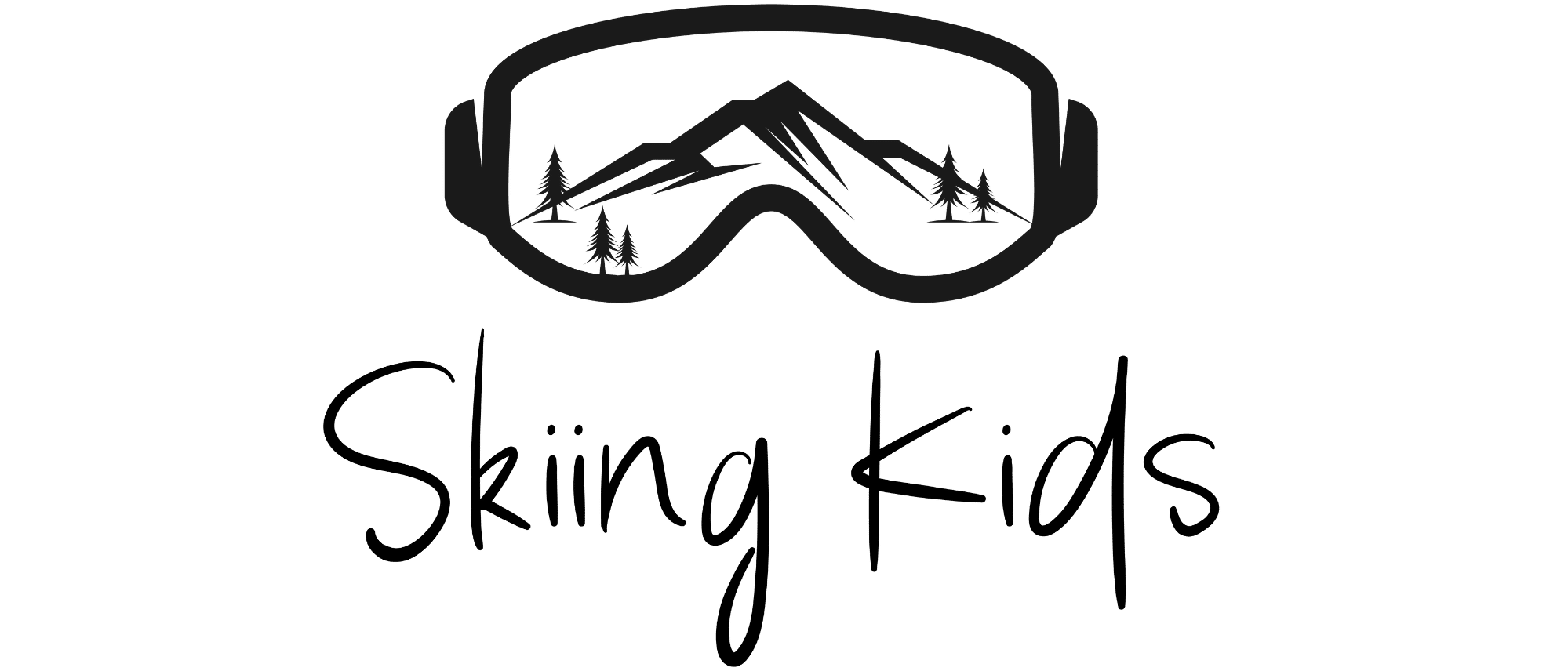This post may contain affiliate links where we earn from qualifying purchases from referring you to our favorite products and brands. As an amazon associate, we earn from qualifying purchases. Find out more in our disclosure.
If you’re looking to get some new skis this season, and want to get the best deal possible, consider buying used skis. There are some incredible deals to be had on used skis and if you know what to look for, you can get like-new skis for a fraction of the price of new skis.
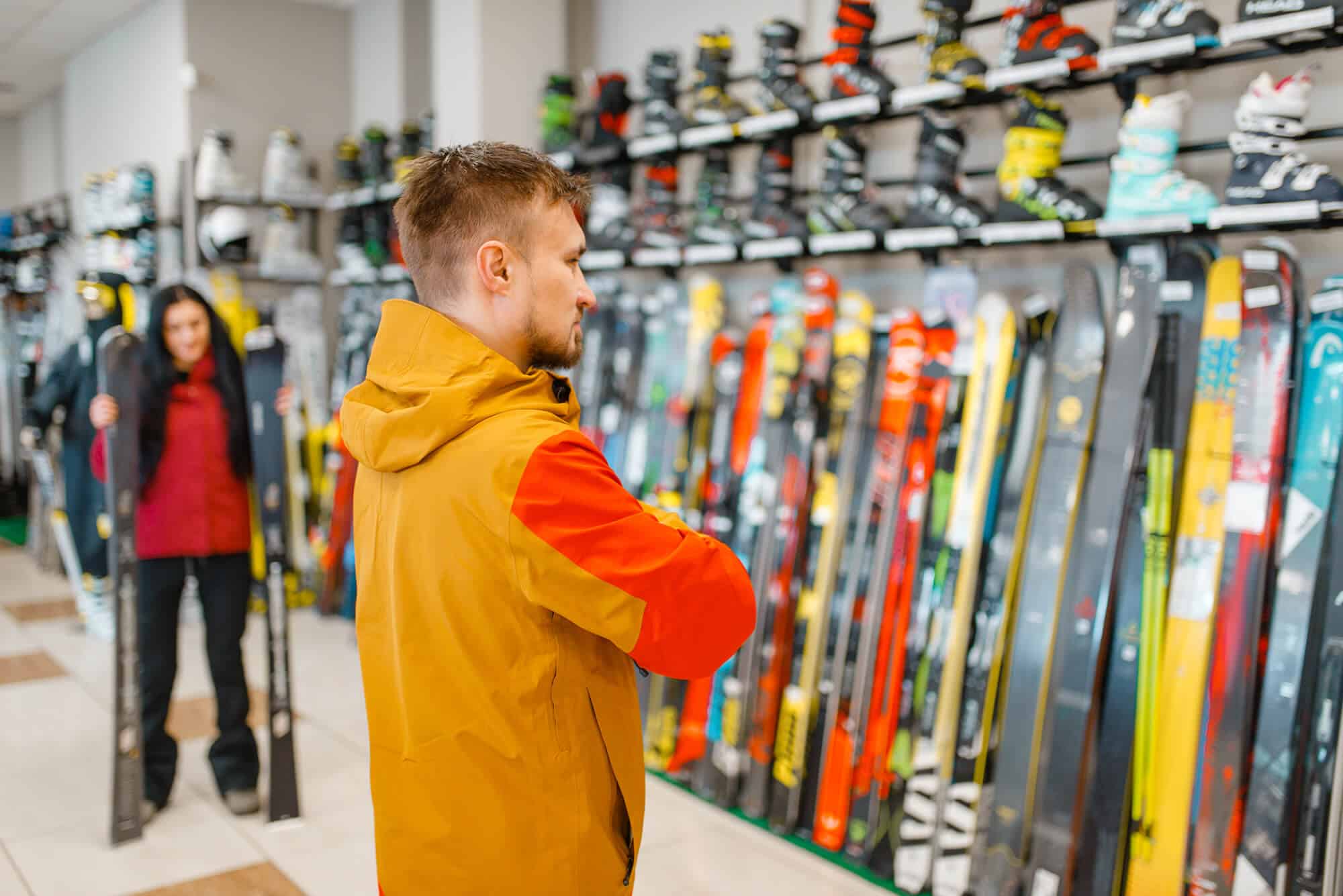
Before you go out and start shopping for used skis, make sure to do your homework, learn what to look for, what you need to avoid, and where to get the best deals.
Is Buying Used Skis A Good Idea?
Absolutely YES! Skis are designed to last for years and year. I’ve had some that were decades old and still in great shape (passed down to me from my Grandma). With solid cores, metal edges, and durable coatings, skis are meant to battle the elements and come out in great condition.
Our family has owned dozens of pairs of skis, and only 2 of those have been brand new. Every year, we seem to need to get at least a couple of new pairs to accommodate our growing kids and every time, we choose to get them used skis instead of brand new.
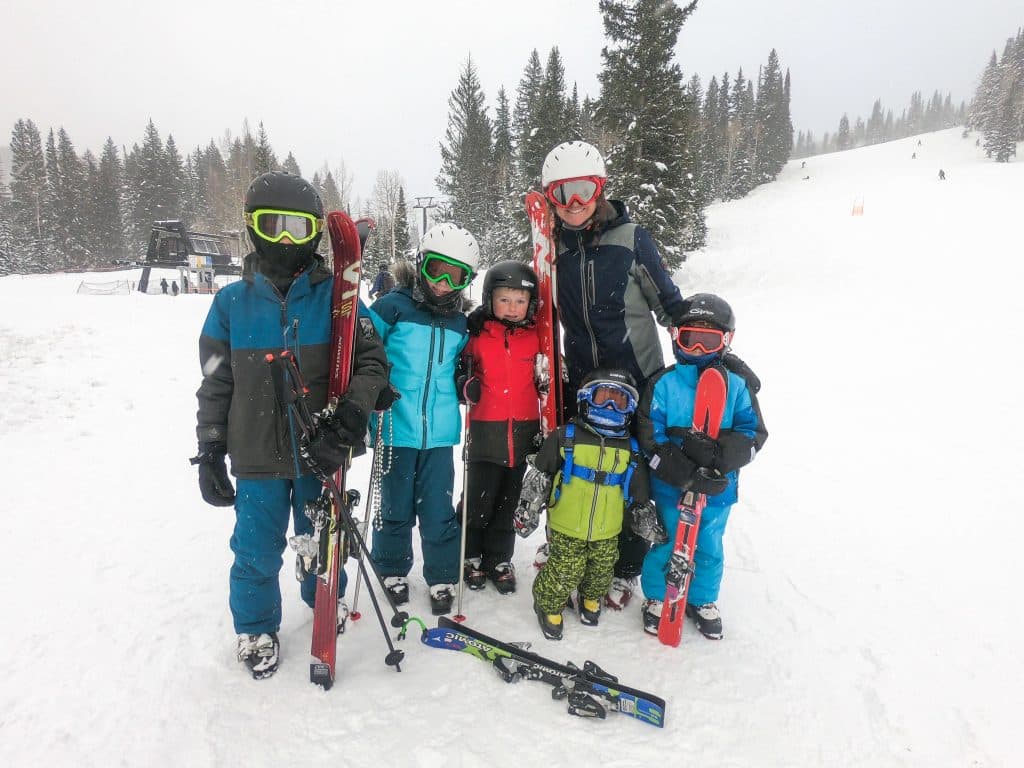
Advantages of Buying Used Skis
The biggest advantage of buying used skis is the cost. I can get a pair of skis that’s a couple of years old, often at about ⅓ of the price of buying new. When you have a large family like ours, you don’t ski a lot, or you’re getting skis for kids who will outgrow them soon, buying used is a great deal.
Additionally, new skis rarely come with bindings, so make sure to factor in the cost of both the skis and the bindings (+ getting them professionally mounted). Used skis almost always come with bindings, so that’s an extra cost you won’t have to pay.
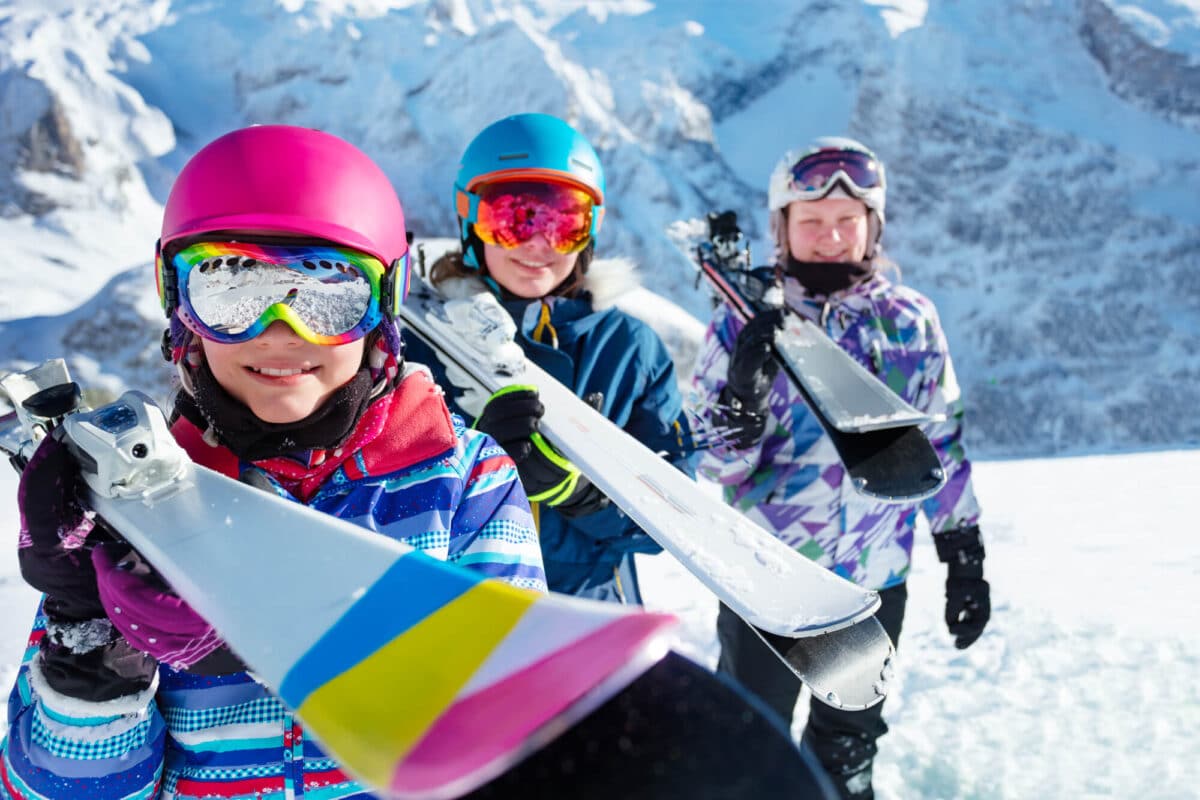
I mentioned above that our family has only ever had 2 brand-new pairs of skis. Guess what – I regret both purchases. 100% honest! We bought the skis because they were the newest, flashiest skis out there and they were “so cool”. However, on a limited budget, I could have bought much nicer skis if I had bought a used pair.
Recently, my husband was looking for a new pair of skis. He had demo’d lots of skis and read lots of reviews, and knew exactly the ski he was looking for. Brand new, with bindings, the skis would have cost him over $1200. He found a one-year-old pair of the same model for just $575. There are a few scratches on the top, but absolutely nothing that will impact the skis’ performance.
Note: Kids skis can be more difficult to find used than adult skis. If you can’t find what you need used, read all about the best new skis for kids. The resale value on kids skis is generally higher than for adult skis, since there’s smaller supply.
Tips For Buying Used Skis
1. Go To A Ski Shop or Ski Swap First
The first place we always go to buy used skis is into a used ski shop, so we can get a good idea of our options. Many gear and rental shops have a used ski area, so if you’re not sure where to go, start there. We ask TONS of questions to the shop. Tell them where you like to ski, how fast, what your experience is, what skills you’re working on, aspects of skiing that are difficult for you…all the things. They should be able to help you narrow down what skis would be a good match for your ski style. Your job when you go in there is to ask ALL THE QUESTIONS about skis, and they should be able to help you.
Tip: Our favorite place to buy used skis is at Lone Pine in Salt Lake. If you want to shop online, they have all their inventory online and you can even call in and chat with their staff about specific skis.
2. Research Used Skis Online
Before you purchase a pair of used skis, do lots of online research. Even if you talk to someone at a ski shop about the skis, you should always do online research too, since there are aspects of the ski that a shop might not know. Whether you’re shopping in person or online, do lots of research about all the used skis before you buy.
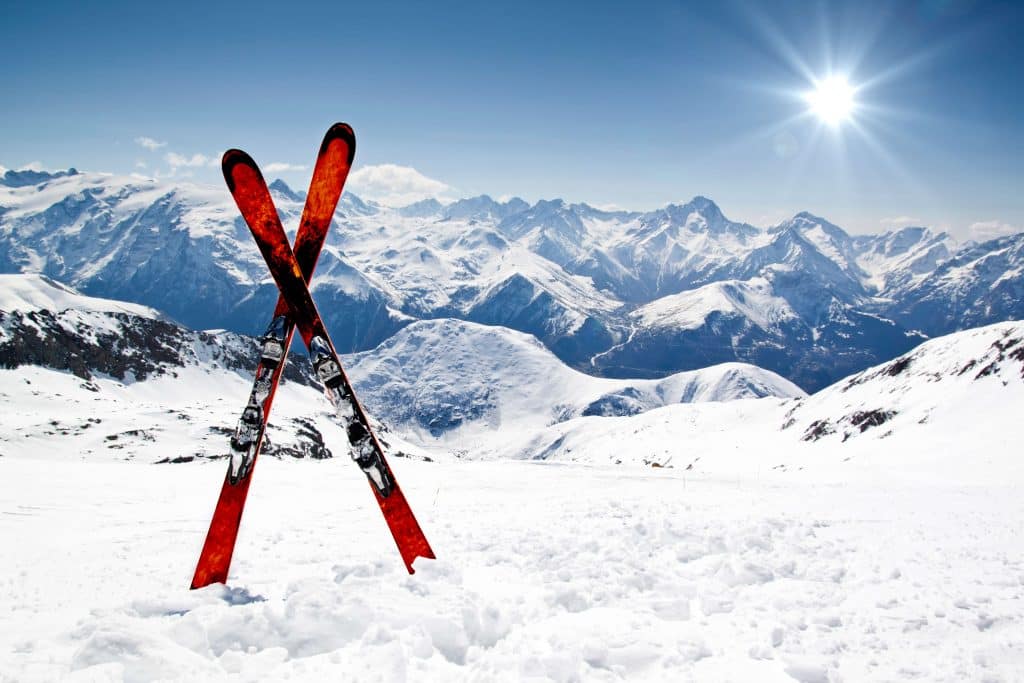
3. Know Your Ideal Ski Length and Width Before You Buy
When buying used skis, it’s crucial to consider both length and width as they’ll significantly impact your skiing experience. The length should be appropriate for your height and skill level; generally speaking, shorter skis(around chin height) are easier to maneuver while longer ones (up to the forehead) offer better stability and go faster, but require more skills to use well. Width comes into play depending on the kind of skiing you’re planning to do—narrower skis are usually better for groomed runs, whereas wider skis are ideal for powder. If you’re skiing a variety of terrain, choose something in the 85-95 range, since that width works well for both powder and on-piste skiing.
Read: What Size Skis Do Kids Need? and Buying Vs Renting Kids Skis
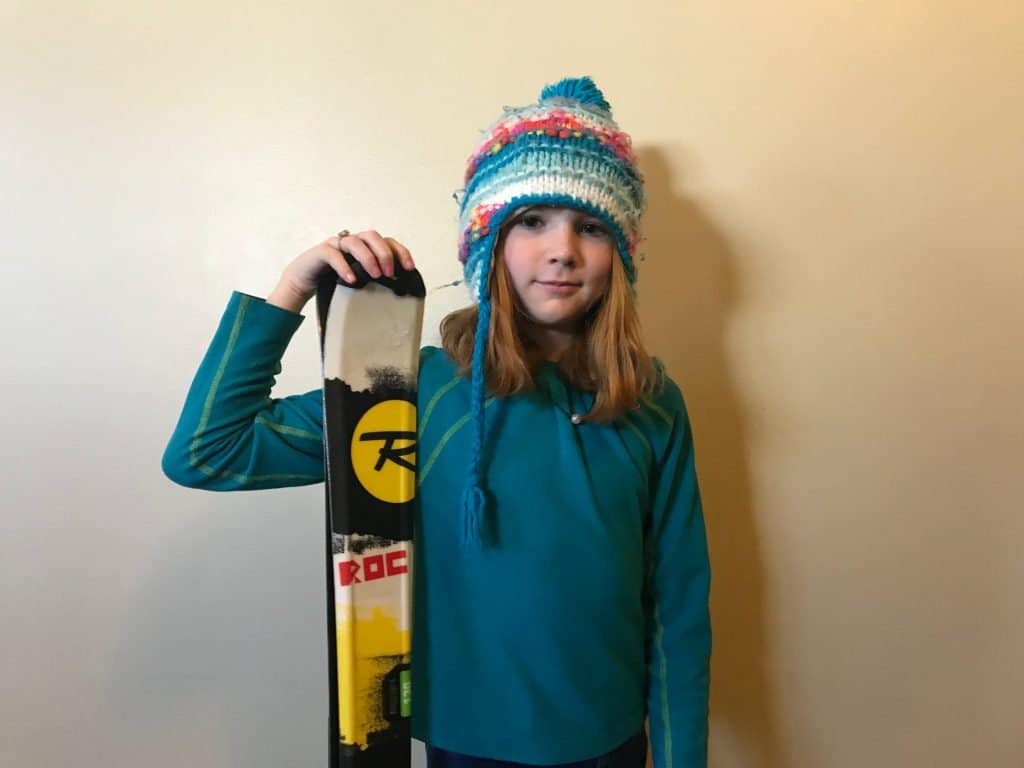
4. Check The Ski Bindings
Bindings are the interface between your boots and the skis, and they play a crucial role in your safety. Check to make sure the bindings are in good working condition, work properly, have functioning brakes, and are compatible with your ski boots. Older binding models might not work with all boots, so it’s a good idea to take your ski boots shopping with you. When you check the bindings, make sure to check that the DIN goes high enough for your needs.
Some things to look for when inspecting ski bindings are cracks in the binding, discoloration, or anything else that looks out of place. Those are a sign NOT to get these ski bindings!
Note: Unless you buy old demo skis with adjustable bindings, you’ll likely need to have your bindings adjusted and set for your ski boot size. This should be done by a professional.
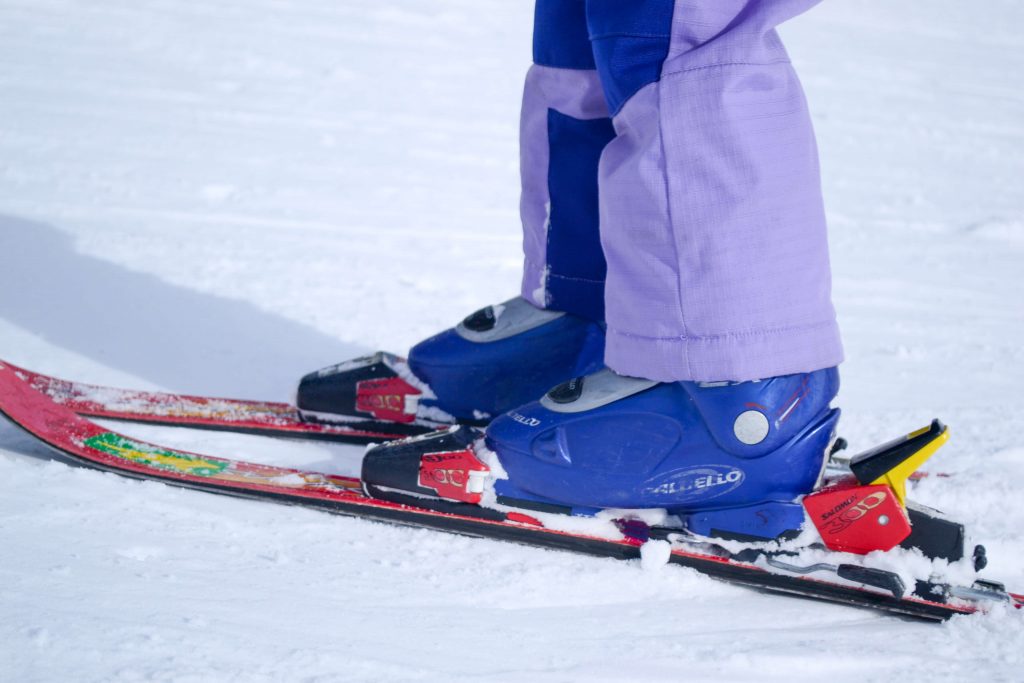
5. Check The Ski Bases and Edges
The ski base should be relatively smooth, with no deep core shots or significant gouges. Minor scratches can usually be repaired with a base grind, but extensive damage could be a deal-breaker.
Edges help you grip the snow during turns and should be free from rust and cracks. Check along the length of the ski for any inconsistencies or visible damages (this is easy to do by running your finger all along the edges). Dull edges can usually be sharpened, but corrosion or cracks are usually a sign of a bigger problem. If there is major base damage near any of the edges, we recommend not getting the skis, since that sort of damage significantly increases the chances of blowing an edge out later on.
6. Be Okay With Some Scratches
If you think that the bases and edges of the used skis you’re looking at are in good shape, do a quick look at the top. You’ll likely see some scratches, dents and other imperfections. These are okay, and won’t impact the ski much at all. If there are major gouges that go through to the core of the ski, that’s a red flag, but scratches are nothing to worry much about.
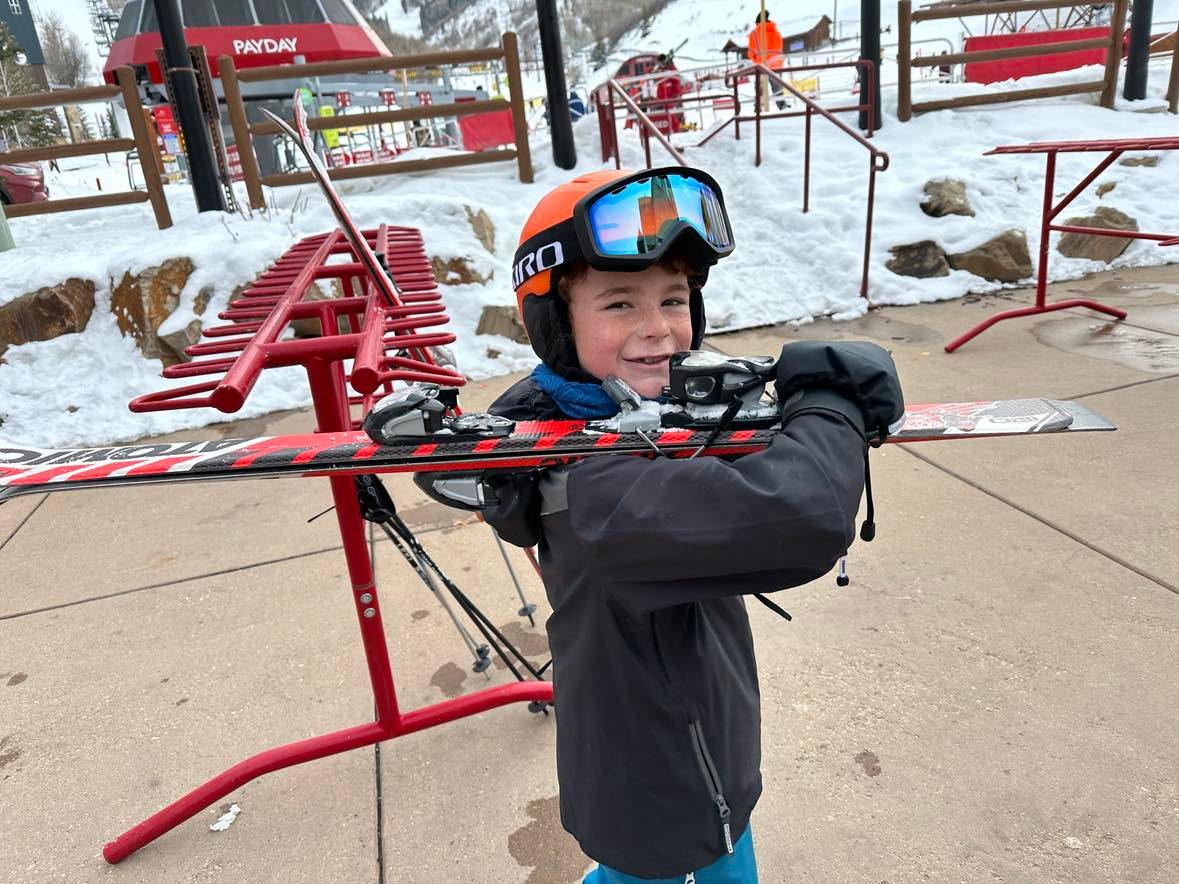
7. Get the Right Ski Flex For Your Ability
Flex pertains to how easily the ski bends and depending on your size and ski style, you’ll want different amounts of flex. A really soft flex (that moves a lot when you push on it), is best for beginners or skiers who are lighter weight and just want to ski beginner/intermediate ski runs. Most skis with a really soft flex have a foam core.
A medium flex is good for going all over the mountain. These skis will work well on both groomers and a little bit of off-piste skiing. Skis with a medium flex typically have a wood core.
A ski with a very stiff flex should only be used by expert skiers. These skis take a lot of power and control to turn but can ski through just about anything. If you’re not an expert skier, you’ll be miserable on a really stiff ski. These skis typically have a metal core.
8. Check For Signs of Delamination or Cracking
Look for signs of separation between the ski layers or any cracks. Such issues can seriously affect performance and could be a safety hazard, particularly for younger or less experienced family members.
What Are The Best Places to Buy Used Ski Gear?
If you’re buying used skis and don’t know exactly what you want, start at a ski shop, or secondhand gear shop. You’ll be able to see several differ
Are Used Skis Going To Be Outdated?
Unlike iphones, ski technology doesn’t change rapidly. While there are brands that have a few minor changes yearly, there are few major changes that take place regularly in the ski industry. I’ve skied skis that are 10-years-old that have almost the exact same construction as a pair that’s new this year. The last MASSIVE change that took place in the ski industry was in the late 90’s when straight skis went away, and skis started to get wider and more shaped. It probably took about 6-10 years for things to normalize, but there have not been any massive changes in skis since then.
How Do Used Skis Compare Price-Wise to New Ones?
Generally speaking, buying used skis can be a great deal. However, like any used product, make sure to do your homework to make sure that the skis really are a good deal. Sometimes the price difference between new and used skis is minimal. Make sure you’re actually getting a good deal, especially when you factor in any repairs or upgrades needed to make the skis family-ready.
